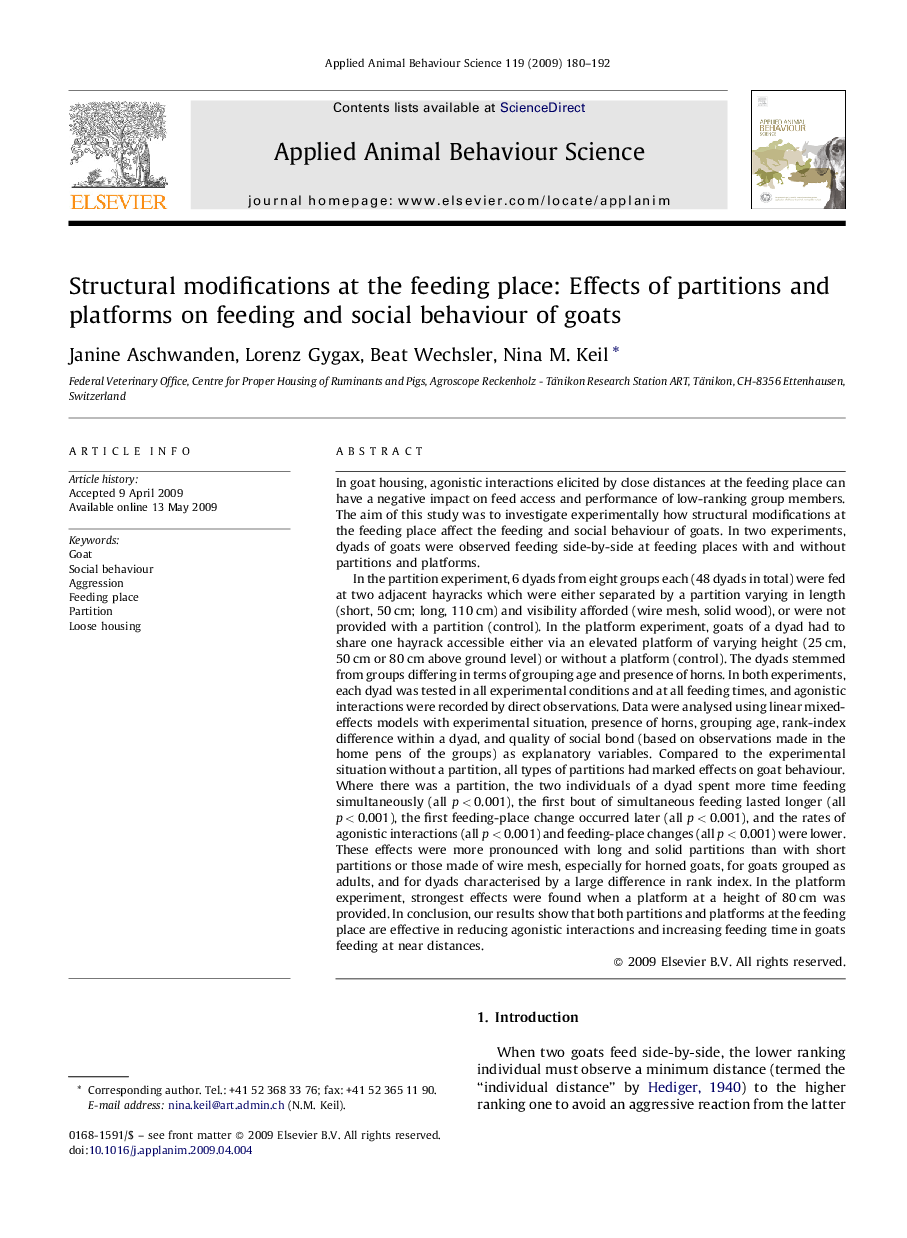| Article ID | Journal | Published Year | Pages | File Type |
|---|---|---|---|---|
| 4523652 | Applied Animal Behaviour Science | 2009 | 13 Pages |
In goat housing, agonistic interactions elicited by close distances at the feeding place can have a negative impact on feed access and performance of low-ranking group members. The aim of this study was to investigate experimentally how structural modifications at the feeding place affect the feeding and social behaviour of goats. In two experiments, dyads of goats were observed feeding side-by-side at feeding places with and without partitions and platforms.In the partition experiment, 6 dyads from eight groups each (48 dyads in total) were fed at two adjacent hayracks which were either separated by a partition varying in length (short, 50 cm; long, 110 cm) and visibility afforded (wire mesh, solid wood), or were not provided with a partition (control). In the platform experiment, goats of a dyad had to share one hayrack accessible either via an elevated platform of varying height (25 cm, 50 cm or 80 cm above ground level) or without a platform (control). The dyads stemmed from groups differing in terms of grouping age and presence of horns. In both experiments, each dyad was tested in all experimental conditions and at all feeding times, and agonistic interactions were recorded by direct observations. Data were analysed using linear mixed-effects models with experimental situation, presence of horns, grouping age, rank-index difference within a dyad, and quality of social bond (based on observations made in the home pens of the groups) as explanatory variables. Compared to the experimental situation without a partition, all types of partitions had marked effects on goat behaviour. Where there was a partition, the two individuals of a dyad spent more time feeding simultaneously (all p < 0.001), the first bout of simultaneous feeding lasted longer (all p < 0.001), the first feeding-place change occurred later (all p < 0.001), and the rates of agonistic interactions (all p < 0.001) and feeding-place changes (all p < 0.001) were lower. These effects were more pronounced with long and solid partitions than with short partitions or those made of wire mesh, especially for horned goats, for goats grouped as adults, and for dyads characterised by a large difference in rank index. In the platform experiment, strongest effects were found when a platform at a height of 80 cm was provided. In conclusion, our results show that both partitions and platforms at the feeding place are effective in reducing agonistic interactions and increasing feeding time in goats feeding at near distances.
